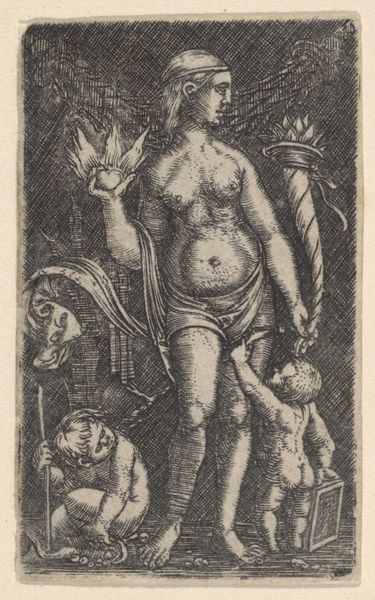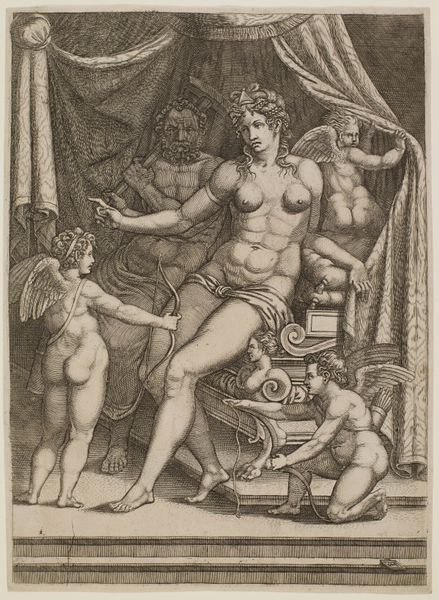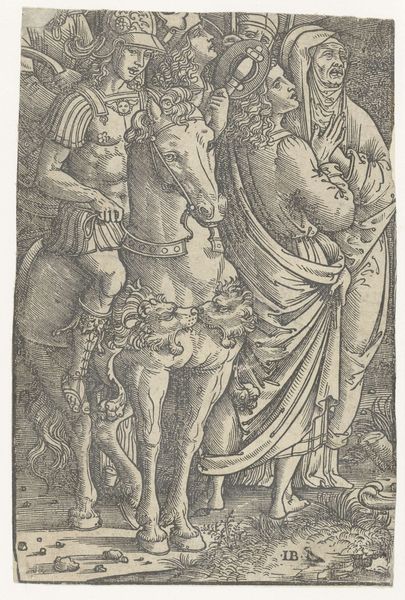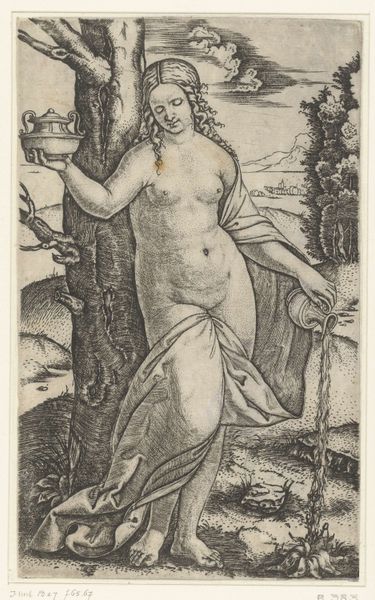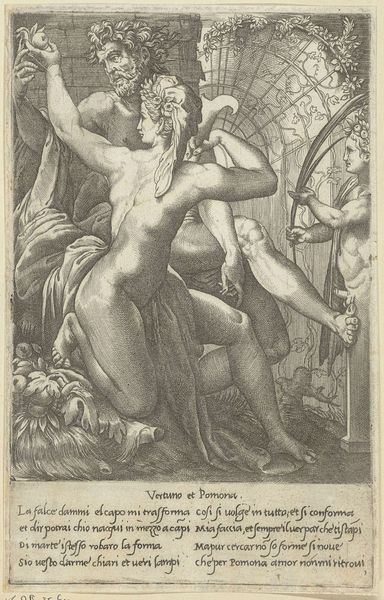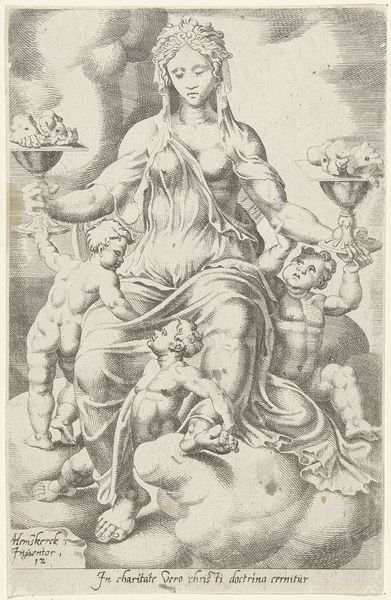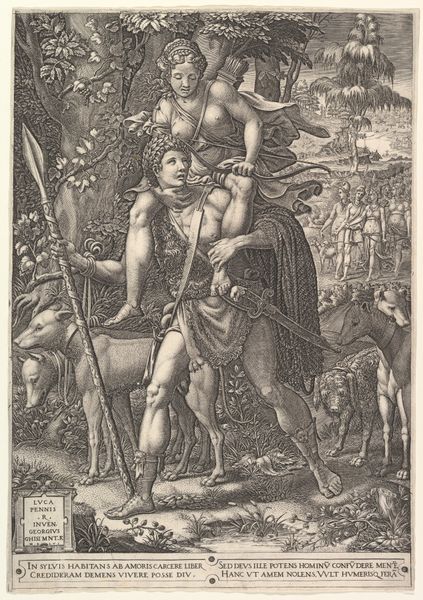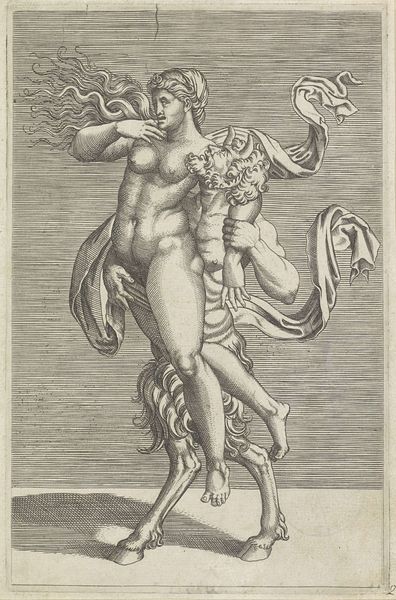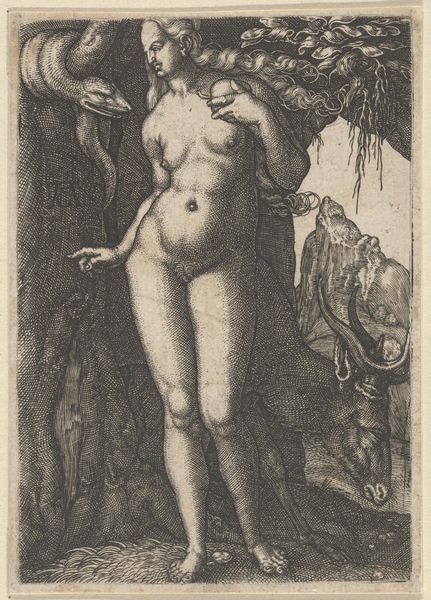
print, engraving
#
pencil drawn
#
allegory
# print
#
classical-realism
#
mannerism
#
figuration
#
11_renaissance
#
history-painting
#
nude
#
engraving
Dimensions: height 220 mm, width 154 mm
Copyright: Rijks Museum: Open Domain
Curator: This engraving, held here at the Rijksmuseum, is titled "Thetis met twee tritons," dating from around 1511 to 1611, by an anonymous artist. Editor: Immediately, the powerful central figure demands attention. There's a classical dynamism here, though the grayscale and fine hatching give it a slightly somber, almost aged, affect. Curator: Indeed. Thetis, a sea nymph from Greek mythology, is rendered with a commanding presence. Note the careful rendering of contrapposto; the shift in weight creates a dynamic and elegant posture. The artist’s employment of mannerist stylistic elements further underscores a preoccupation with idealised anatomical forms. Editor: What strikes me is the laborious nature of such an engraving. To translate the supple forms of flesh and the fluidity of water into these precise lines speaks of immense skill and invested labor, it emphasizes how printed images were produced and disseminated in a pre-industrial setting. Curator: The artist uses cross-hatching to establish chiaroscuro effects, thus drawing your eyes to particular points in the picture. For example, notice how shadows define the contours of her figure and bring definition to the faces of the tritons. Editor: Thinking about production, it is interesting to imagine the use and circulation of printed allegories for decoration. Prints like these weren’t merely aesthetic objects; they signified wealth, a claim to education and knowledge production, becoming part of the material culture. Thetis, standing tall on what seems a swarm of tiny ocean waves is quite intriguing. Curator: The narrative too adds a layer of complexity. As goddess of the sea, Thetis’s stance, surrounded by these attendants, communicates dominance over the marine environment. It embodies a mastery over subject. Editor: I hadn't thought about it like that. The sea as labor source; even gods exploit the earth. Thanks, your perspective clarifies things! Curator: My pleasure. Paying close attention to an artwork’s construction allows it to communicate its underlying ideas.
Comments
No comments
Be the first to comment and join the conversation on the ultimate creative platform.
